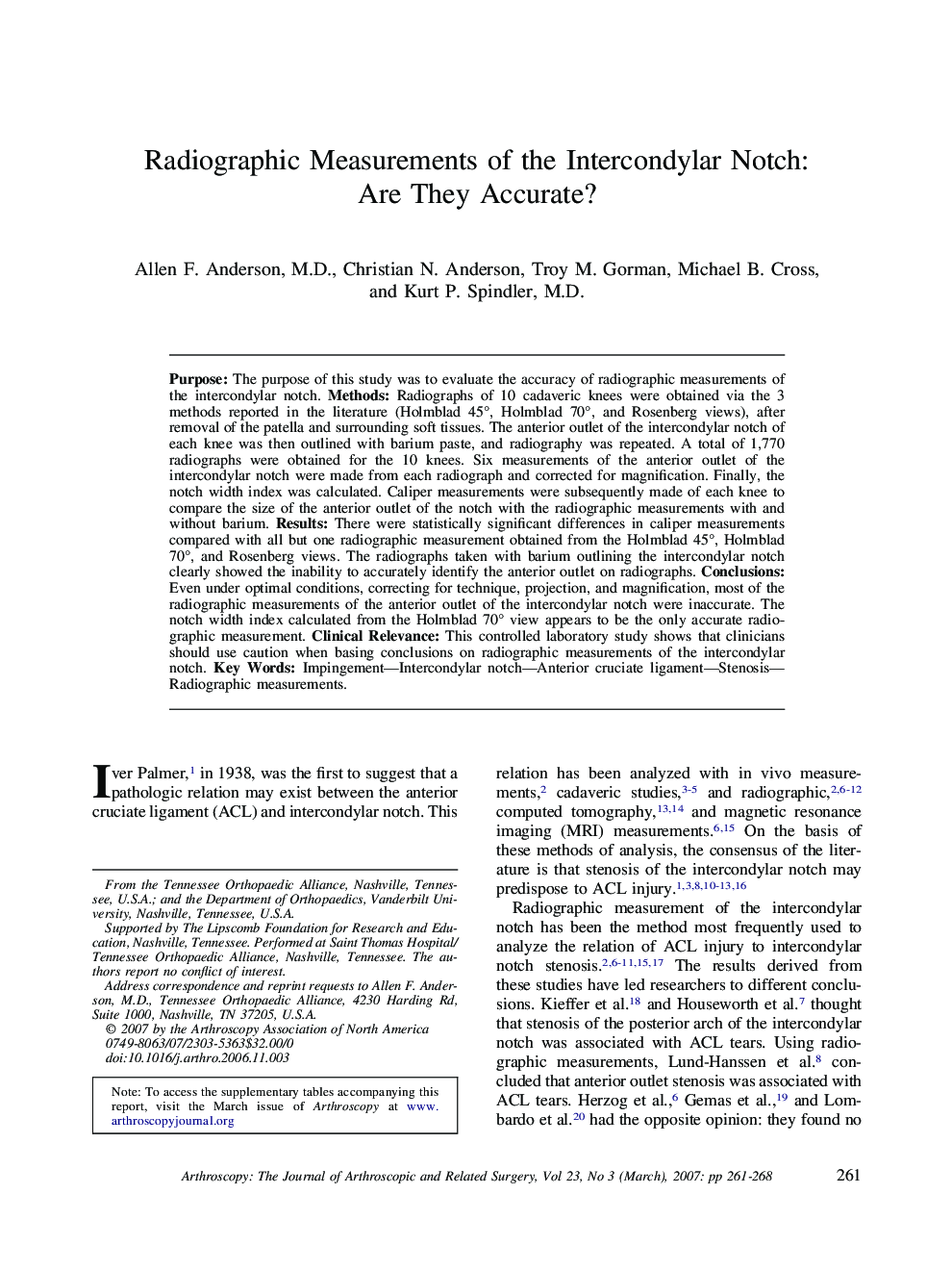| Article ID | Journal | Published Year | Pages | File Type |
|---|---|---|---|---|
| 4047616 | Arthroscopy: The Journal of Arthroscopic & Related Surgery | 2007 | 10 Pages |
Abstract
Purpose: The purpose of this study was to evaluate the accuracy of radiographic measurements of the intercondylar notch. Methods: Radiographs of 10 cadaveric knees were obtained via the 3 methods reported in the literature (Holmblad 45°, Holmblad 70°, and Rosenberg views), after removal of the patella and surrounding soft tissues. The anterior outlet of the intercondylar notch of each knee was then outlined with barium paste, and radiography was repeated. A total of 1,770 radiographs were obtained for the 10 knees. Six measurements of the anterior outlet of the intercondylar notch were made from each radiograph and corrected for magnification. Finally, the notch width index was calculated. Caliper measurements were subsequently made of each knee to compare the size of the anterior outlet of the notch with the radiographic measurements with and without barium. Results: There were statistically significant differences in caliper measurements compared with all but one radiographic measurement obtained from the Holmblad 45°, Holmblad 70°, and Rosenberg views. The radiographs taken with barium outlining the intercondylar notch clearly showed the inability to accurately identify the anterior outlet on radiographs. Conclusions: Even under optimal conditions, correcting for technique, projection, and magnification, most of the radiographic measurements of the anterior outlet of the intercondylar notch were inaccurate. The notch width index calculated from the Holmblad 70° view appears to be the only accurate radiographic measurement. Clinical Relevance: This controlled laboratory study shows that clinicians should use caution when basing conclusions on radiographic measurements of the intercondylar notch.
Related Topics
Health Sciences
Medicine and Dentistry
Orthopedics, Sports Medicine and Rehabilitation
Authors
Allen F. M.D., Christian N. Anderson, Troy M. Gorman, Michael B. Cross, Kurt P. M.D.,
